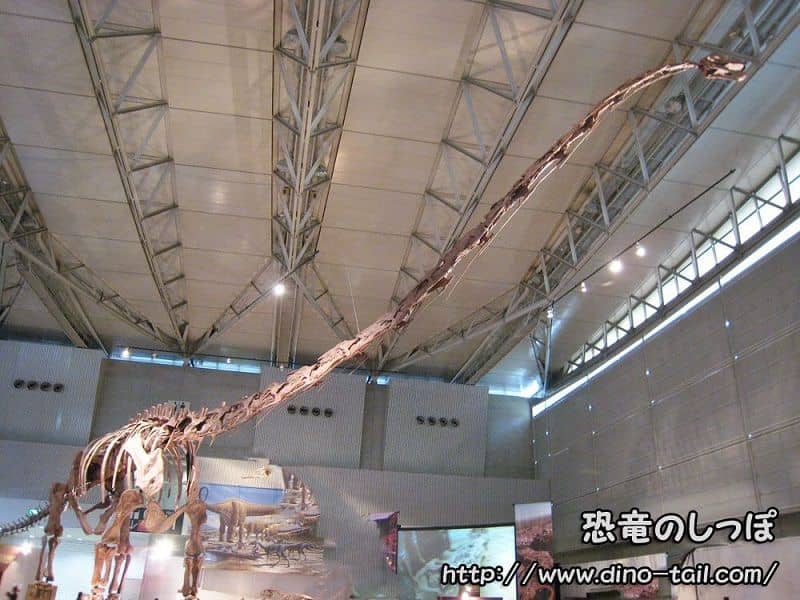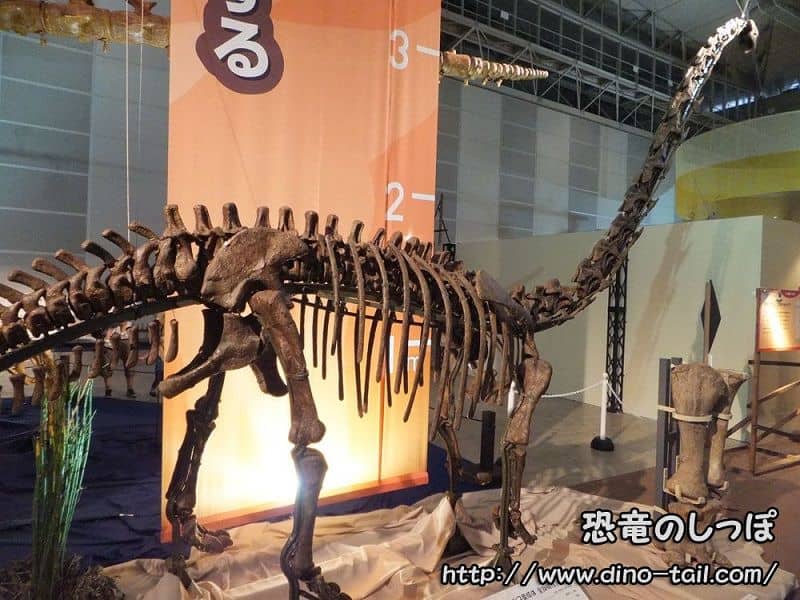About Mamenchisaurus
| Scientific Name (Genus) | Mamenchisaurus |
| Meaning of Name |
Mamenxi lizard (after a place in Sichuan, China)
Mamenxi (place name) - saurus (lizard) [Greek] |
| Classification | Saurischia, Sauropodomorpha (Sauropoda) |
| Total Length | Approx. 22 - 35m |
| Diet | Herbivorous |
| Period | Late Jurassic |
| Species |
Mamenchisaurus anyuensis
Mamenchisaurus constructus Mamenchisaurus fuxiensis Mamenchisaurus hochuanensis Mamenchisaurus sinocanadorum Many are suggested to be separate genera, and research is ongoing. |
| Year of Paper Publication | 1954 |
| Genus Name Publication |
On a new sauropod from Yiping, Szechuan, China.
by C.C. (Chung Chien) Young. 1954. |
Features
The defining feature of Mamenchisaurus is its extremely long neck. For a body length of 35 meters, its neck was 16.9 meters long. It is estimated to have weighed 25-30 tons. It is one of the largest dinosaurs in Asia.
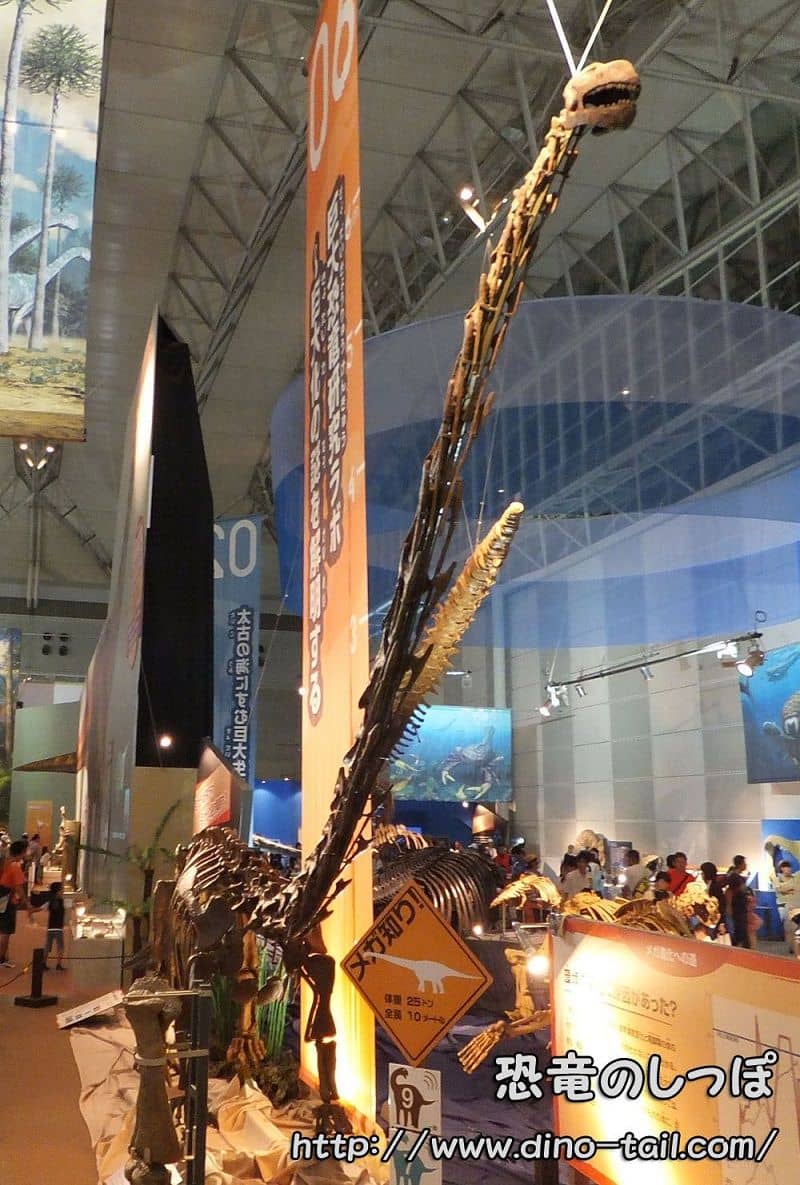
While sauropods typically have 15 or fewer cervical vertebrae (neck bones), mamenchisaurids had as many as 19. To support this long neck, each vertebra was hollowed out to reduce weight, and the cervical ribs overlapped with the preceding and succeeding vertebrae, forming a bundle that created a suspension bridge-like structure to increase strength.
Even more surprisingly, it has been found that some mamenchisaurids (such as Mamenchisaurus hochuanensis ) had a small bony mass (tail club) at the tip of their tails, formed by the fusion of several vertebrae. This is thought to have evolved independently of the weapons of ankylosaurs and may have been used for defense.
The structure of the cervical vertebrae indicates that the neck was not well-suited for lifting upwards. It seems to have been better adapted for eating plants over a wide area by moving its long neck from side to side, rather than eating leaves from high branches.
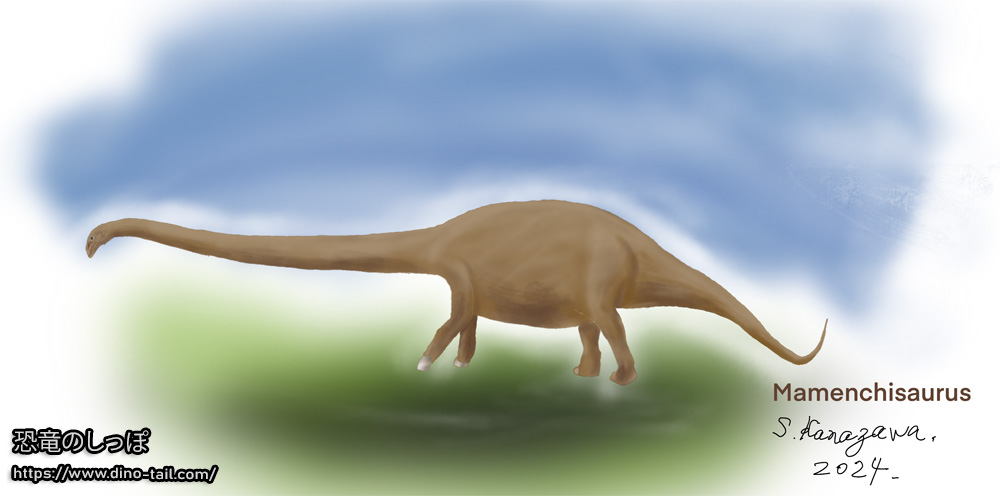
The Mystery of Mamenchisaurus's "True Identity"
For many years, Mamenchisaurus became a "wastebasket taxon" into which many long-necked sauropods discovered in the Jurassic strata of China were classified. As a result, many species have been described under the genus Mamenchisaurus.
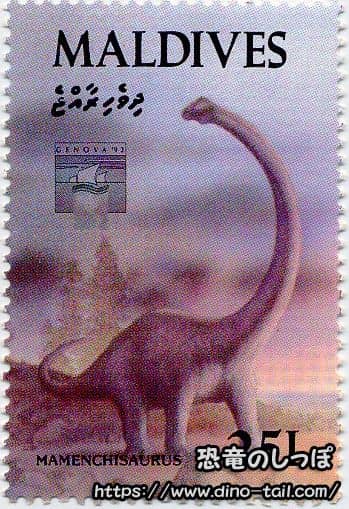
However, the type specimen that was first named Mamenchisaurus ( Mamenchisaurus constructus ) was actually a very fragmentary fossil. Therefore, it has been difficult to be certain whether the more complete specimens found later (such as the famous Mamenchisaurus hochuanensis ) truly belong to the "same genus" as the original Mamenchisaurus.
Recent research suggests that many of the species previously assigned to Mamenchisaurus are likely to be separate, independent genera of dinosaurs. For example, the largest species, M. sinocanadorum , is now strongly suggested to be a separate genus called Xinjiangtitan. Scientists are currently in the process of sorting out this confusing classification, and in the future, the name "Mamenchisaurus" may only be used for a very small number of species.
Discovery
Mamenchisaurus was first discovered in 1952 at a highway construction site in Sichuan Province, China. In 1954, it was described in a paper by the Chinese paleontologist C.C. (Chung Chien) Young, and since then, more than five species have been described under the genus Mamenchisaurus.
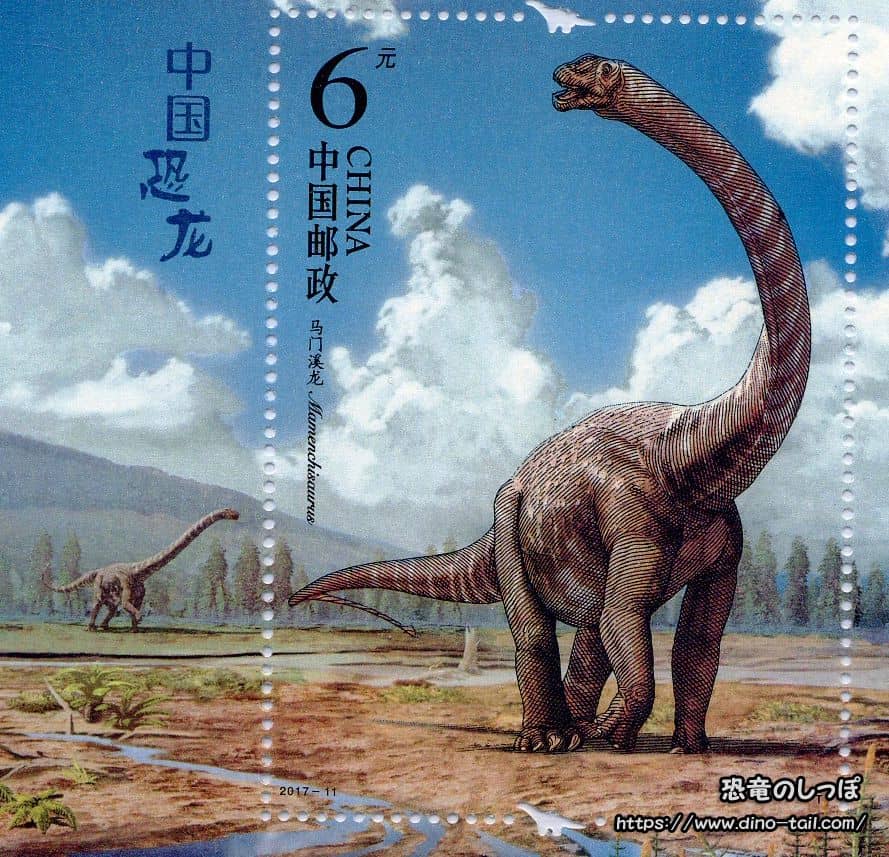
In 1996, a nearly complete articulated skeleton, including the skull, was discovered.
Skin impressions of Mamenchisaurus have also been found, providing important clues about the skin of sauropods.
In the Junggar Basin of China, huge fossilized footprints believed to belong to a mamenchisaurid have been discovered. These footprints, left in mud containing volcanic ash, eventually became a "Death Pit" where other smaller dinosaurs became trapped and unable to escape. Fossils of dinosaurs such as Guanlong that fell into this footprint trap have actually been found, giving us a glimpse into the ecosystem of that time.
Mamenchisaurus Stamp & Fossil Gallery
